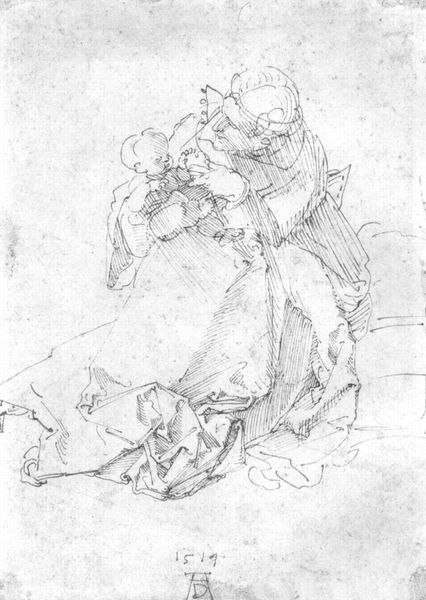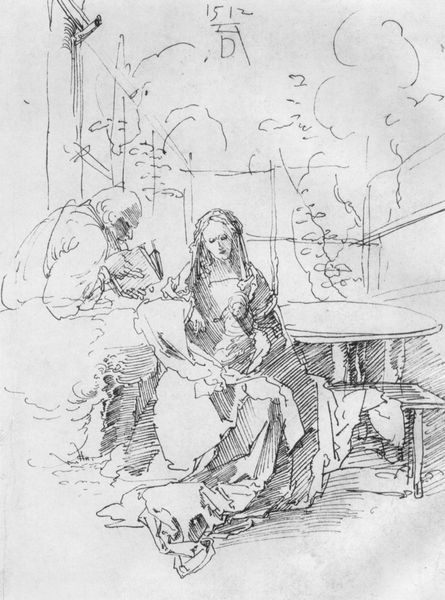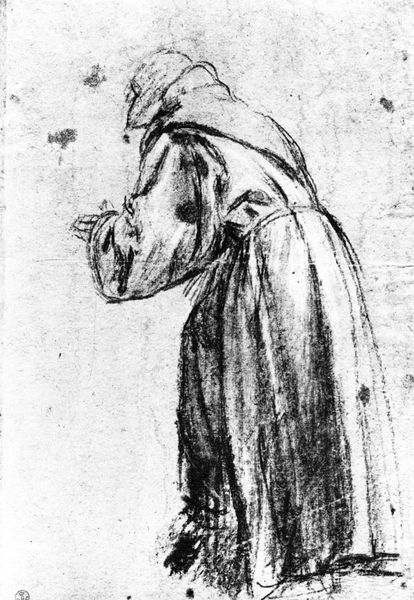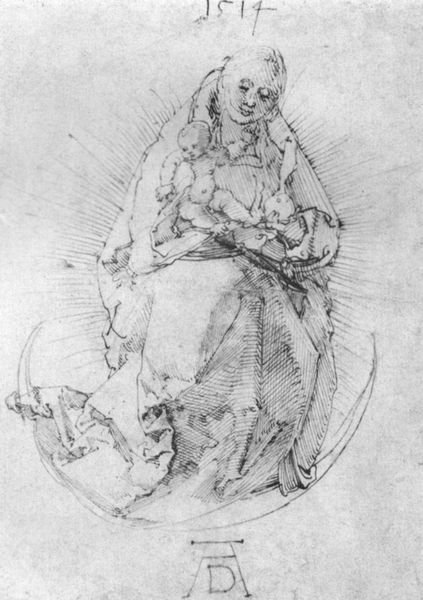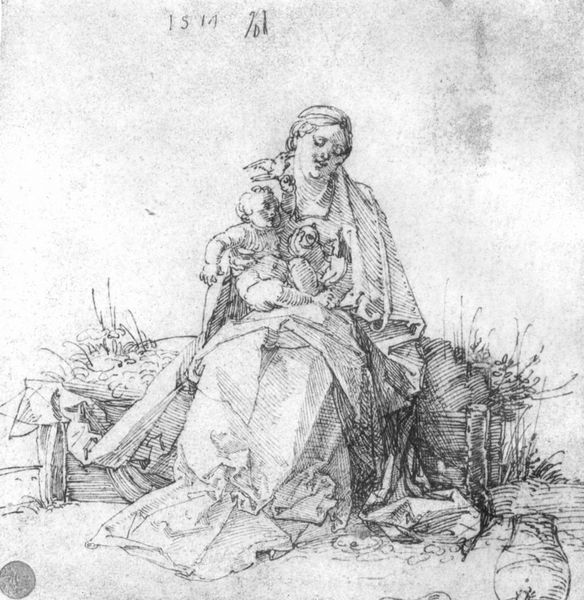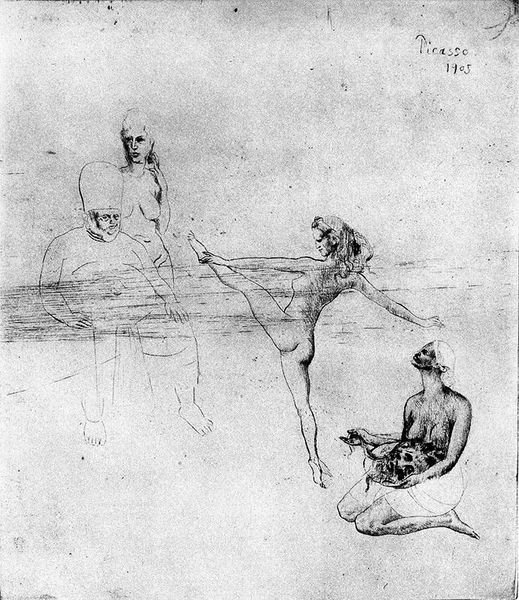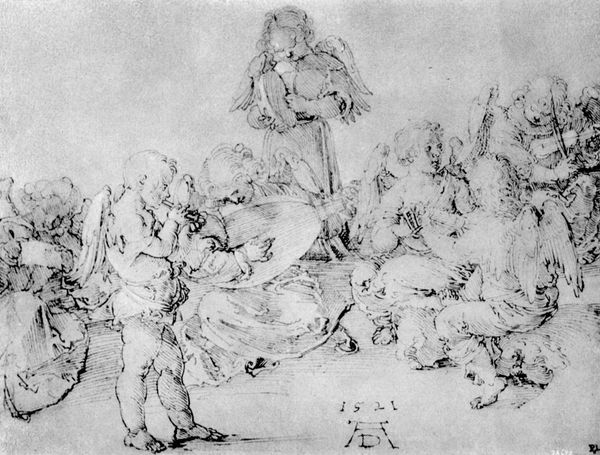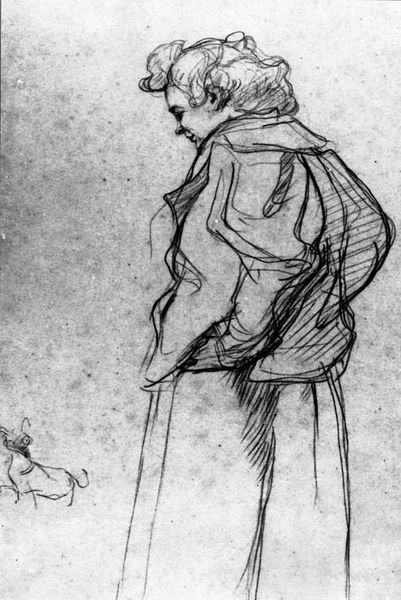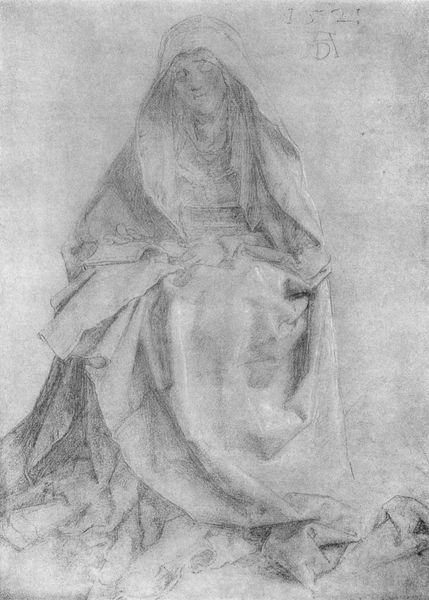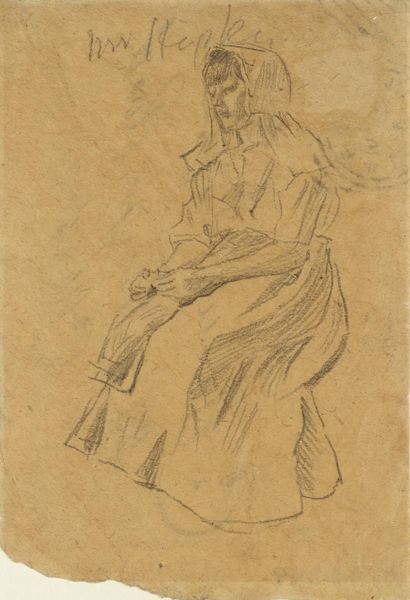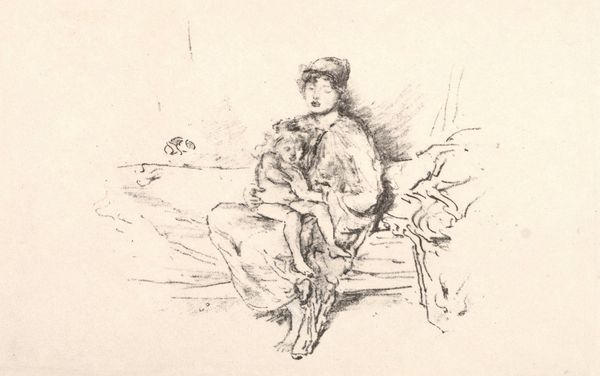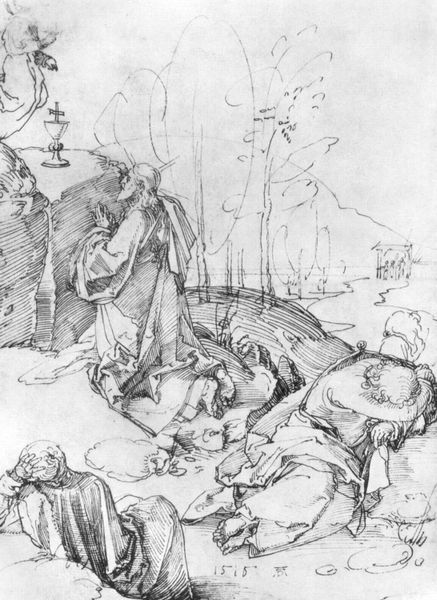
drawing, paper, pencil
#
portrait
#
drawing
#
charcoal drawing
#
figuration
#
paper
#
madonna
#
child
#
pencil drawing
#
sketch
#
pencil
#
northern-renaissance
#
early-renaissance
Copyright: Public domain
Editor: This is a study sheet, done in 1494 by Albrecht Durer, made with pencil on paper. I notice the composition feels quite fragmented. There’s a Madonna and Child, some disembodied hands, and even a sleeve study. What stands out to you from a formal perspective? Curator: Formally, I’m struck by the relationship between the realism conveyed in the hand studies, particularly the detailed rendering of musculature and skin texture, and the more idealized representation of the Madonna and Child. The varying degrees of finish within a single sheet pose some interesting questions. Editor: Questions like…? Curator: Consider the texture created by Durer’s varied linework. In the Madonna, the lines seem softer, more yielding. But when observing the drapery or the hand studies, you’ll see crisper, more assertive lines. Editor: Right, it’s almost like he’s using different languages for different elements. Is he trying to emphasize different levels of importance through these varying textures? Curator: Perhaps. Or he may simply have been exploring the expressive potential of the medium itself. The blank space, too, operates as a significant compositional element. How do you interpret its effect? Editor: The blank space makes everything feel floating and indefinite. The precision of the details against that emptiness heightens their importance. I’m curious if Durer did other sketches like these where he plays with this idea? Curator: Indeed, viewing this drawing not just as a preparatory work but also an examination into line, form, and spatial relationships provides a more comprehensive appreciation. Editor: It reframes the entire piece and makes me see a method to what felt random before.
Comments
No comments
Be the first to comment and join the conversation on the ultimate creative platform.
